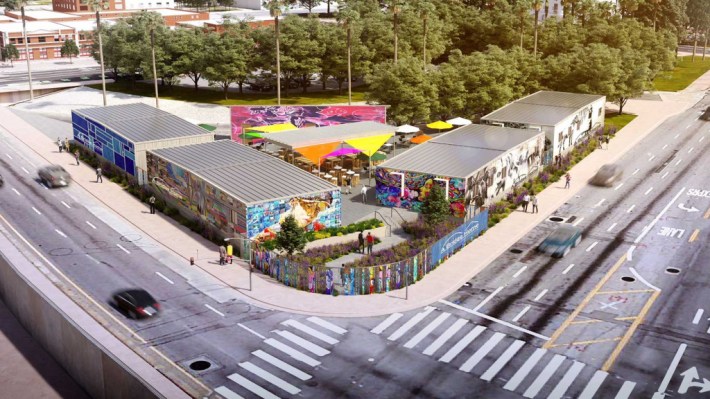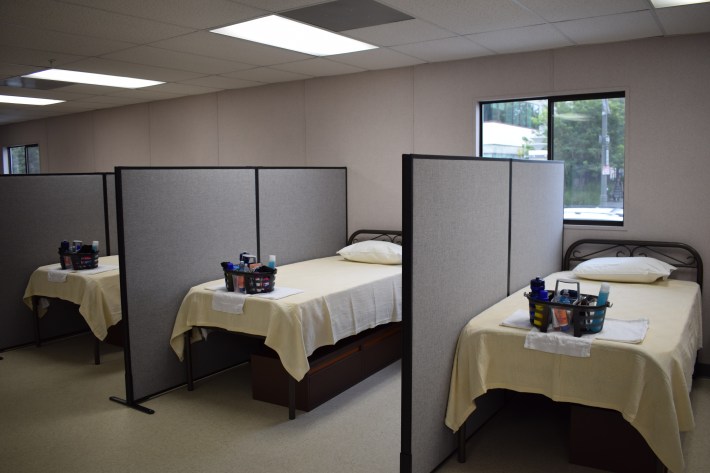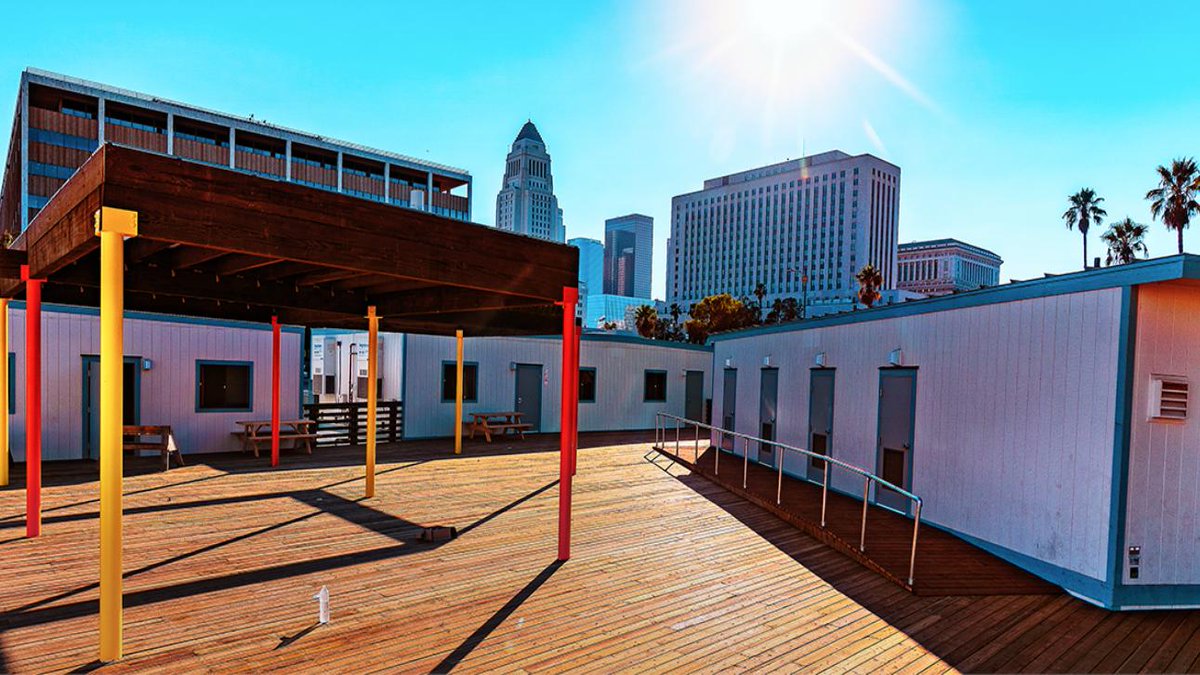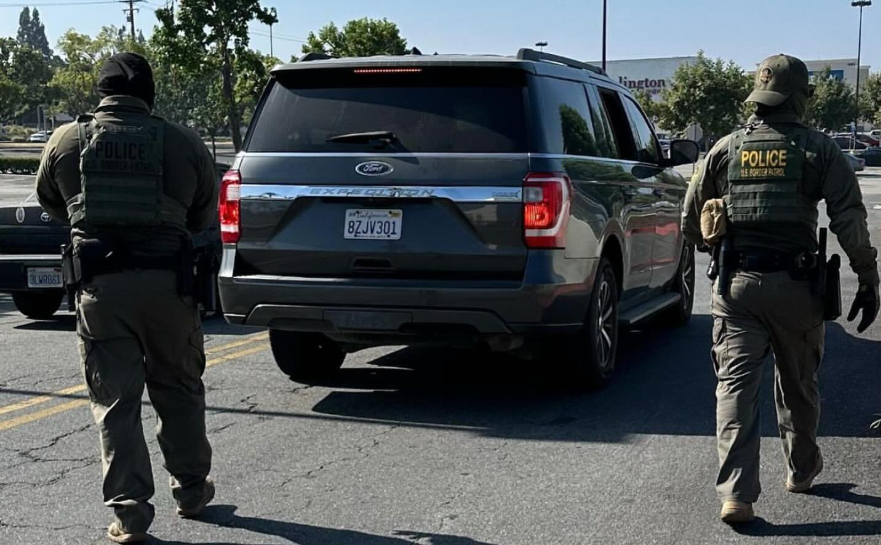It's been over a year since Mayor Eric Garcetti announced his "A Bridge Home" program to build temporary housing for the city's growing number of homeless individuals. Just over three months later, the first such project, El Puente, opened adjacent to historic Olvera Street in downtown Los Angeles. El Puente (Spanish for "The Bridge") is scheduled to run for three years from its starting date in September of 2018.
In announcing "A Bridge Home," Garcetti promised that similar shelters would appear throughout the city in the short term. But high costs and local opposition--what the L.A. Times referred to as "the NIMBY Wall"--have slowed the expansion of bridge housing. In addition, the slow pace of building additional permanent affordable housing units have made stays at these temporary shelters longer than expected.
Nevertheless, according to Chris Espinosa, the director of Olvera Street (an L.A. City department), and John Maceri, the executive director of the nonprofit The People Concern which manages El Puente, things are going as well as can be expected.
“We have two choices. We can leave people on the street and the street population will continue to grow, or we can house them," says Maceri. "If you put the housing where people are--and that's what we did with El Puente--it brings some of those people indoors. It doesn’t completely eliminate homelessness in those areas.”
City Councilmember José Huizar represents El Puente and much of downtown as well as Boyle Heights and parts. Huizar pushed hard for this bridge housing program, meeting with local business and other opponents. Nearly a year in, he is happy with the development and the program and argues that the city needs more programs such as El Puente.
"For the people it has assisted, there is no doubt it is a success," Huizar writes in a statement to Streetsblog.
"Whether they have gotten into supportive housing, or been able to secure a job or come back and help others, these are real people with real experiences and whose lives are changing for the better. We should also not underestimate the immense benefit, stability and clarity they all get from having the same bed to sleep in, access to restrooms, showers and meals, along with an array of social, health, job, and rehabilitative services."

El Puente is located at 711 N. Alameda Street - just north of the 101 Freeway, very close to Union Station.
The site has five trailers. Three of the trailers contain fifteen beds each and serve formerly homeless individuals. Two of the trailers are for men, and another is for women. Of the remaining trailers, one contains bathrooms and laundry facilities for residents, and the other holds offices for case workers, social workers, and mental health professionals. The residents' meals and snacks are prepared offsite and delivered.
Trailers with beds are open by key-access 24-7, giving residents with evening and night jobs access to a safe, indoor place to sleep. Maceri says that most residents have jobs, and the few residents that don't work offsite have frequent regular appointments with case workers, city departments, or public health professionals to prepare for life in permanent housing.
El Puente has staff onsite 24 hours a day.

Maceri is proud of El Puente's record of moving people from temporary bridge housing to permanent housing. The goal is to move individuals to permanent housing within ninety days. In its first nine months, fifteen El Puente residents have been housed, and another eight current residents have obtained housing vouchers. Forty-five individuals have moved on to a different form of supportive housing, such as assisted living facilities, skilled nursing facilities, or another interim housing project.
But even with these successes, El Puente has a waiting list of roughly fifty people at any given time.
Why is it taking longer than hoped to get people permanently housed?
“The stay is longer than originally anticipated, due to the lack of available permanent housing units. The plan was we would have about a ninety-day stay for individuals," explains Maceri. "The biggest challenge we’re facing in Los Angeles is the lack of affordable housing, especially for people living on very low incomes."
When asked if he believes that the city's slow-growth of affordable housing stock is slowing the efforts to reduce homelessness, Huizar agrees.
"Overall with the lack of available housing at all levels, and a robust housing market, we have huge challenges as our last LAHSA Homelessness Count showed. Right now, we have homeless people with housing vouchers that, in a highly competitive rental and housing market, are just not getting into housing and that is a constant issue," Huizar writes.

Earlier this month, I met with Robert, an El Puente resident since the day it opened. Robert has been working hard to secure an apartment outside of bridge housing - not an easy task.
“My goal is to get my foundation and get my apartment," he explains. "My apartment is my foundation, a roof over my head--that’s my goal.”
A native Angeleno, two years ago Robert and his wife moved from the streets of Los Angeles to live with her daughter in Fresno. After his wife died, he found himself back in his hometown, and back on the streets.
“It was a blow," he remembers. "You lose your wife, and then you have to go back to a situation that you just left."
Robert was able to find a part-time job quickly upon returning to L.A., but not a place to stay. Instead, he was spending his nights on La Placita (a park located between El Puente and Olvera Street) or Skid Row. He describes the handful of months he lived there as a dark time and Skid Row as a place where "there is no hope" and "nobody keeps their promises." When he heard that there would be new bridge housing opening, he joined the "interest list" and quickly found a roof over his head again.
“You're in this program to get better, not to get worse. Everything is going to take awhile, and you have to stay positive. You have to stay with the program.”
As with too many housing facilities, El Puente's opening followed a somewhat contentious public process. Olvera Street merchants were initially very concerned that a bridge home would attract a greater number of the region's homeless to the area.
“This is a new approach towards housing. We were the first one to get launched," explains Espinosa. "It was a tough sell.”
To earn the merchants' support, or at least mollify the loudest critics, the city promised increased cleanings and an increased police presence in the Olvera Street area. A success at Olvera Street was critically important in part because it is the first project in the A Bridge Home initiative. But also because it is located only a few blocks from City Hall.
"Those meetings did become heated," Espinosa remembers of last year's outreach meetings. "The Olvera merchants are small business owners [who] are very attuned to what’s going on at the street level.” However, Espinosa notes the city, specifically the Mayor's Office and Huizar were essential in earning the local businesses' tacit support.
"I initially stated that I agreed with the merchants that the outreach wasn’t sufficient and I arranged for several more meetings, including one that I attended," Huizar wrote, stressing the need for outreach ahead of final approval or construction. "Outreach is important for any major city policy, especially when it’s the first one that the city is doing, which is what El Puente represents. "
The city has kept its word. There have been no major problems reported between residents of El Puente and the Olvera Street business community. There is a twenty-four hour police presence in the area around El Puente, and the city sponsors cleanups twice a week.
However, advocates for homeless rights have questioned whether the "enforcement zones" around Olvera Street accomplish anything more than demonizing homeless people. In a Downtown News article about El Puente, a Legal Aid Foundation lawyer called the enforcement zone "another form of segregation."
Under city law, people experiencing homelessness are allowed to place tents on the sidewalk from 9 p.m. through 6 a.m. the next morning. During the day, police can force tents to be taken down and confiscate homeless people's possessions. Homeless advocates, including the Legal Aid Foundation, have questioned the legality of these sweeps, calling them unconstitutional.
Just last week, a group of seven homeless advocate organizations including Legal Aid Foundation sued the city arguing that the city code which allows LAPD to conduct "sweeps" where property is seized is unconstitutional. By seizing property of people experiencing homelessness, it puts those losing their property back even farther in attempts to improve their living situation. The lawsuit follows a series of sweeps in downtown's Civic Center area near City Hall on July 1.
Espinosa feels this criticism of the sweeps near El Puente is unwarranted. He states that the police are working with outreach teams to connect people with resources and direct them to use city-provided storage bins located at the adjacent Catholic church. Espinosa claims there is little ticketing or confiscation of personal belongings, and that the police provide some safety for those sleeping on the streets at night.
It's “not an us-against-them,” Espinosa says of the relationship. Again, Huizar agrees, although he does concede that the city is still learning best practices of engaging with people experiencing homelessness and that it must do better.
"It’s not just enforcement, it is engagement for those experiencing homelessness. But it is a challenging sweet spot that we are all trying to land on," Huizar writes.
"It’s not illegal to be homeless, so any enforcement is about ensuring our sidewalks are passable during daytime and early evening hours while also reminding people that services are available to them."
But even with benign intent, an increased police presence can send the wrong message to those sleeping on the street as well as to those housed in the surrounding community. Housed residents are more likely to see the homeless as a threat if they see them being treated as criminals. The City Council is debating what changes can be made to city policy to improve policing near sites that have homeless encampments. And while the area near Olvera Street and El Puente is seeing fewer people experiencing homeless, the numbers have increased both regionally and across the Downtown area.
While the enforcement zone and policing of the park near El Puente and Olvera Street remain controversial, there is near-universal agreement that El Puente has been a godsend for those who have gotten into the program, and that more bridge home options are needed throughout the city.
"I need to show people what can happen, what they can do," said Robert at the end of our interview.
"You get out on the street and think, 'I have no money, I have no apartment.' You focus on what you don’t have, and it becomes like a habit... and habits are hard to break. Before I got to El Puente, I had to change the way I thought. I had to be positive and think there was something better... If I can do it, they can do it.”
Robert's sentiments echo the city's feelings about what they hope El Puente can represent to the rest of the city. If they can do it in Downtown Los Angeles, then we should be able to do it elsewhere.
"Ultimately, the success of El Puente will be gauged on the success of the entire bridge housing program the Mayor is sponsoring," Huizar concludes.
"I have at least one more slated in my district and I strongly believe we need to continue and bring homelessness housing and services to the entire city so that those services are no longer just concentrated in Skid Row, Hollywood and Venice. This is just one small part of a citywide approach to address homelessness."







